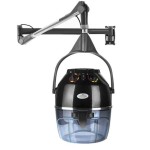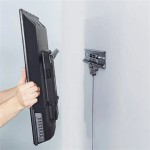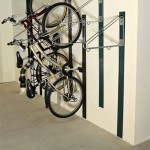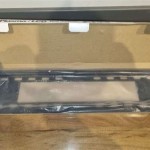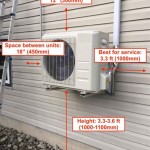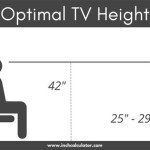Best Wall Mounts for Roku TVs: A Comprehensive Guide
Roku TVs have become increasingly popular due to their user-friendly interface, extensive streaming options, and affordability. While they can be placed on traditional stands, wall mounting offers several advantages, including space saving, improved viewing angles, and a cleaner aesthetic. Selecting the appropriate wall mount for a Roku TV requires careful consideration of several factors, ensuring compatibility, stability, and ease of installation. This article provides a comprehensive guide to understanding the key aspects of choosing the best wall mount for a Roku TV.
Understanding Roku TV Wall Mount Compatibility
The first and foremost consideration when selecting a wall mount is compatibility with the specific Roku TV model. This compatibility hinges primarily on two factors: the Video Electronics Standards Association (VESA) mounting pattern and the weight capacity of the mount. VESA patterns are standardized configurations of mounting holes on the back of TVs, expressed in millimeters (e.g., 200x200mm). Before purchasing a wall mount, it is crucial to identify the VESA pattern of the Roku TV. This information is generally available in the TV's user manual, the manufacturer's website, or by measuring the distance between the mounting holes on the back of the TV. The wall mount must be compatible with this VESA pattern. If the Roku TV has a non-standard VESA pattern or if the VESA pattern isn't readily available, then universal wall mounts that support a wider range of VESA patterns can be considered.
Weight capacity is another critical aspect of compatibility. Each wall mount is designed to support a maximum weight. Exceeding this weight limit poses a significant safety risk, potentially leading to the TV falling and causing damage or injury. The weight of the Roku TV can be found in the same resources as the VESA pattern. Ensure that the chosen wall mount has a weight capacity that comfortably exceeds the weight of the TV, allowing for a margin of safety. It is generally recommended to choose a mount with a weight capacity that is at least 20% higher than the TV's weight.
Furthermore, consider the size of the TV. While most wall mounts specify a range of TV sizes they support, it is important to verify that the chosen mount is appropriately sized for the specific Roku TV. A mount that is too small may not be able to accommodate the TV's VESA pattern or weight, while a mount that is too large may be unnecessarily bulky and visually unappealing.
Types of Wall Mounts and Their Benefits
Various types of wall mounts are available, each offering different features and benefits. Understanding the distinctions between these types is essential for selecting the most suitable option for the individual's needs and viewing preferences. The primary types of wall mounts include fixed, tilting, full-motion, and low-profile mounts.
Fixed wall mounts are the simplest and most affordable type. They hold the TV flush against the wall, providing a clean and minimalist look. Fixed mounts are ideal for situations where a specific viewing angle is desired and adjustments are not frequently needed. They offer the most secure and stable mounting option, as there are fewer moving parts to potentially loosen or fail. However, they lack the flexibility of other mount types and do not allow for tilting, swiveling, or extending the TV away from the wall. Installation is typically straightforward, and fixed mounts are well-suited for situations where the TV is viewed directly from a seated position.
Tilting wall mounts allow the TV to be tilted vertically, typically downward. This feature is beneficial for reducing glare from overhead lights or for improving the viewing angle when the TV is mounted higher on the wall. Tilting mounts offer a compromise between the simplicity of fixed mounts and the flexibility of full-motion mounts. They provide some adjustability while maintaining a relatively low profile. The tilting mechanism is usually simple to operate, allowing for easy adjustments as needed. However, they do not offer the same range of motion as full-motion mounts and are not ideal for situations where the TV needs to be swiveled or extended away from the wall.
Full-motion wall mounts, also known as articulating mounts, offer the greatest flexibility. They allow the TV to be tilted, swiveled, and extended away from the wall, providing a wide range of viewing angles. Full-motion mounts are ideal for situations where the TV is viewed from multiple locations or where the viewing angle needs to be frequently adjusted. They are also useful for accessing the back of the TV for cable management or maintenance. However, full-motion mounts are typically more expensive and complex to install than fixed or tilting mounts. They also tend to be bulkier and may not be as aesthetically pleasing in some situations. It is important to choose a high-quality full-motion mount with a sturdy construction to ensure stability and prevent sagging over time.
Low-profile wall mounts are designed to position the TV as close to the wall as possible. They are similar to fixed mounts but offer an even slimmer profile. Low-profile mounts are ideal for achieving a sleek and modern look. They are particularly well-suited for situations where minimizing the distance between the TV and the wall is a priority. However, low-profile mounts offer limited or no adjustability, and accessing the back of the TV for cable management can be challenging. Installation is typically straightforward, but it is important to ensure that there is sufficient space for cables and connectors behind the TV.
Installation Considerations and Best Practices
Proper installation is crucial for ensuring the safety and stability of the wall-mounted Roku TV. Incorrect installation can lead to the TV falling, causing damage or injury. It is essential to follow the manufacturer's instructions carefully and to use the appropriate tools and hardware. If the individual is not comfortable with DIY projects, professional installation is highly recommended.
The first step in the installation process is to locate wall studs. Wall studs are vertical framing members that provide structural support for the wall. Mounting the wall mount directly to wall studs is essential for ensuring that the TV is securely supported. A stud finder can be used to locate the studs. If a stud finder is not available, the studs can be located by tapping on the wall and listening for a solid sound. Once the studs have been located, mark their position with a pencil.
Next, attach the wall mount bracket to the wall studs. Use the appropriate screws and washers to secure the bracket to the studs. Ensure that the bracket is level before tightening the screws. It is also important to consider the desired height of the TV when positioning the bracket. The center of the TV screen should typically be at eye level when seated. Consult viewing distance charts and ergonomic recommendations to determine the optimal viewing height for the specific Roku TV size.
After the wall mount bracket is securely attached to the wall, attach the mounting arms to the back of the Roku TV. Use the appropriate screws that are compatible with the TV's VESA pattern. Ensure that the mounting arms are securely attached to the TV before lifting it. If the TV is large or heavy, it is recommended to have assistance when lifting and mounting it onto the wall bracket.
Carefully lift the TV and align the mounting arms with the wall bracket. Secure the TV to the bracket according to the manufacturer's instructions. Ensure that all screws and fasteners are properly tightened. Once the TV is securely mounted, verify that it is level and stable. If using a tilting or full-motion mount, test the range of motion to ensure that it operates smoothly and without any binding or resistance.
Cable management is an important aspect of wall mounting a TV. Run all necessary cables, such as HDMI cables, power cables, and antenna cables, before mounting the TV. Use cable ties, cable sleeves, or cable raceways to organize and conceal the cables. Avoid running cables behind the TV in a way that could put stress on the connectors or impede the movement of the TV. Consider using a wall plate to conceal the cables as they enter and exit the wall. This will create a cleaner and more professional look.
Finally, double-check all connections and settings to ensure that the TV is functioning properly. Test the picture and sound quality. Adjust the viewing angle as needed. Dispose of any packaging materials properly. Regular inspection of the wall mount and connections is recommended to ensure continued safety and stability. Periodically check the tightness of screws and fasteners and address any issues promptly.

Roku Pro Series Tv Wall Mount

The 4 Best Tv Wall Mounts Of 2025 Reviews By Wirecutter

The 4 Best Tv Wall Mounts Of 2025 Reviews By Wirecutter

Tcl How To Choose The Correct Wall Mount

Roku Pro Series Tv Wall Mount

The 4 Best Tv Wall Mounts Of 2025 Reviews By Wirecutter

Easy Cable Access Tilt Tv Monitor Wall Mount For Tvs 32 70 Wal Com

Roku Pro Series Tv Wall Mount

Roku Pro Series Tv Wall Mount

The 4 Best Tv Wall Mounts Of 2025 Reviews By Wirecutter

